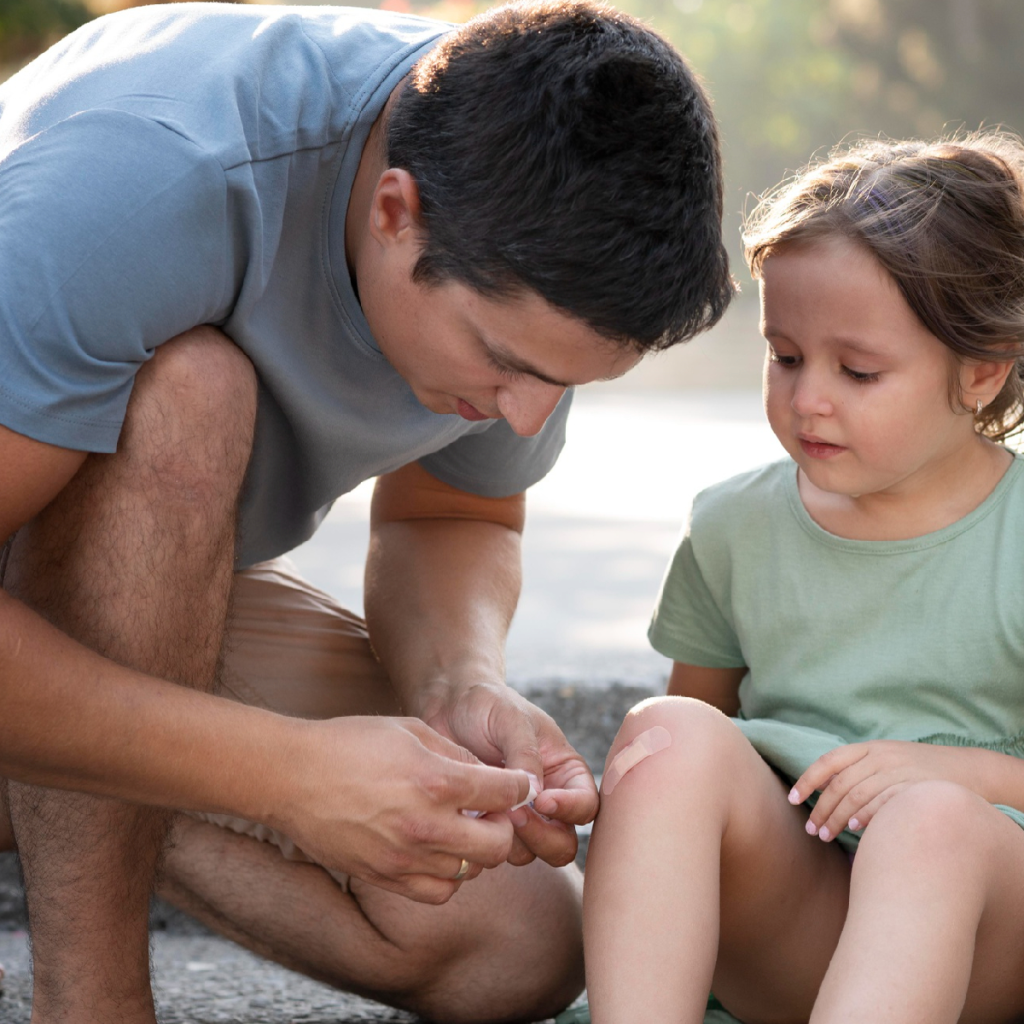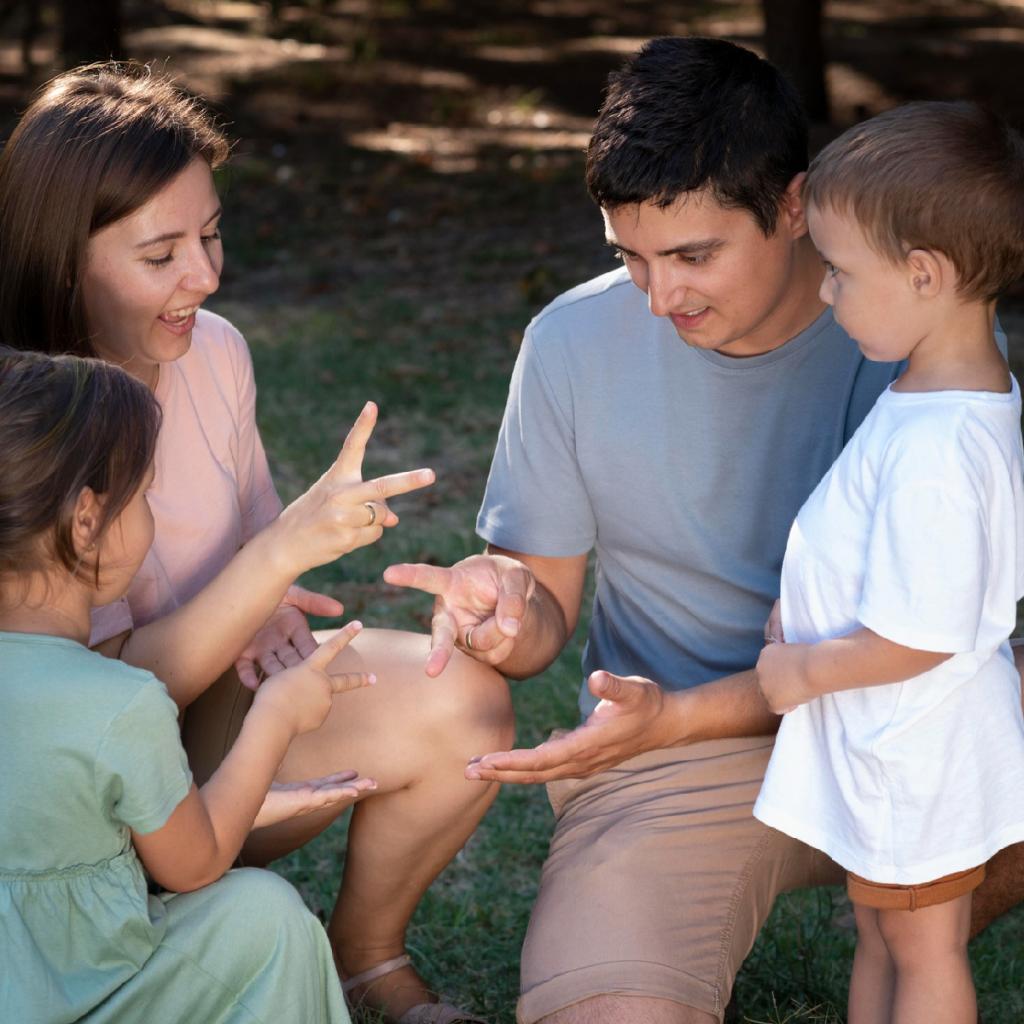Discover effective strategies for teaching basic first aid to 2-3 year old children.
Teaching Basic First Aid to 2-3 Year Old Children
First aid is like a superhero power that everyone should possess, even little ones like 2-3 year old children. You might be wondering, why would toddlers need to know first aid? Well, my dear reader, buckle up and get ready to dive into this fascinating world of first aid for the tiniest humans!

Understanding the Importance of First Aid for Toddlers
As parents, caregivers, or educators, we have a duty to keep our little ones safe. Toddlerhood is a time of exploration and discovery, which also means bumps, bruises, and the occasional scrape or two. Teaching basic first aid to toddlers not only equips them with life-saving skills, but it also empowers them to be in control of their own safety.
When it comes to toddlers, accidents can happen in the blink of an eye. One moment they are happily playing, and the next moment they have fallen and hurt themselves. Having a basic understanding of first aid can make all the difference in these situations. Imagine the peace of mind that comes with knowing your toddler can take care of themselves if they get a minor cut or scrape while you are busy attending to something else.
But first aid for toddlers is not just about treating minor injuries. It is also about instilling a sense of responsibility and empathy in them from a young age. By teaching them how to respond in an emergency situation, we are empowering them to be proactive and helpful members of society. They learn that they have the power to make a difference and assist others in need.
Why First Aid Knowledge is Crucial at a Young Age
Imagine a world where every toddler knows how to respond in an emergency situation. A world where they can confidently tend to their own minor injuries, seek help when needed, and understand the importance of safety. By starting early and introducing first aid concepts to 2-3 year olds, we lay the foundation for a future generation of responsible and caring individuals.
When we teach first aid to toddlers, we are not just teaching them a set of skills. We are nurturing their problem-solving abilities, critical thinking skills, and decision-making capabilities. They learn to assess a situation, identify potential risks, and take appropriate action. These skills not only benefit them in emergency situations but also in their everyday lives as they grow older.
Furthermore, first aid knowledge at a young age helps to build confidence and resilience in toddlers. They develop a sense of self-assurance knowing that they have the skills to handle minor injuries. This confidence extends beyond just physical well-being and spills over into other aspects of their lives, such as social interactions and academic pursuits.
The Role of First Aid in Child Safety
First aid goes hand in hand with child safety, like peanut butter and jelly. By teaching our little ones basic first aid skills, we provide them with the knowledge to prevent accidents and minimize harm. From understanding how to avoid common household hazards to knowing what to do in case of an emergency, first aid becomes their trusty sidekick in the journey of childhood.
Child safety is not just about bubble-wrapping our toddlers and keeping them in a protective bubble. It is about equipping them with the tools and knowledge to navigate the world safely. First aid acts as a safety net, giving them the confidence to explore and try new things, knowing that they have the skills to handle any minor mishaps that may occur along the way.
Moreover, first aid education for toddlers also extends to teaching them about the importance of prevention. They learn about the significance of wearing helmets while riding bikes, holding hands while crossing the road, and staying away from dangerous objects. By instilling these safety habits from a young age, we are setting them up for a lifetime of responsible decision-making and risk assessment.
Tailoring First Aid Lessons for 2-3 Year Olds
Teaching toddlers is a different ball game altogether. Their minds are like sponges, ready to absorb knowledge, but also easily distracted by the wonders of the world around them. So, how can we make first aid lessons interesting, engaging, and most importantly, age-appropriate?
When it comes to teaching first aid to 2-3 year olds, it’s essential to adapt the concepts to their level of comprehension. Explaining complex medical terms like “hemorrhage” or “cardiopulmonary resuscitation” might not exactly resonate with a toddler. Instead, we can use terms like “ouchie” or “boo-boo” to describe injuries. By using simple language and relatable terms, we ensure that the little ones can understand and connect with the first aid concepts.
Visual aids play a crucial role in capturing the attention and imagination of toddlers. Incorporating colorful illustrations or pictures into the lessons can help them visualize the concepts better. For example, showing a picture of a bandage being applied to a teddy bear’s leg can make it easier for them to understand how to provide basic first aid. By breaking down complex ideas into bite-sized pieces and using visual aids, we make first aid more relatable and understandable for our tiny superheroes.
Now, let’s talk about making first aid learning fun and engaging for toddlers. We all know that toddlers thrive on playfulness and imagination, so why not incorporate these elements into our lessons? Get creative! Take a stuffed animal and demonstrate how to give it a bandage or make a splint out of popsicle sticks. Encourage the children to participate by pretending to be injured themselves or by role-playing as the rescuer. Sing catchy songs about calling for help or create a fun dance routine that teaches them how to perform basic first aid techniques. By turning first aid into a playful adventure, we ignite their curiosity and make learning an enjoyable experience.
Another way to engage toddlers in first aid lessons is through interactive games. For example, you can set up a pretend doctor’s office where the children can dress up in medical costumes and take turns playing the role of the doctor, nurse, or patient. This hands-on approach allows them to practice their newly acquired first aid skills in a safe and playful environment.
Furthermore, incorporating storytelling into the lessons can captivate the toddlers’ attention and help them remember important first aid techniques. Create age-appropriate stories that involve characters who encounter different accidents or injuries and need the help of the little ones to provide first aid. This not only reinforces their understanding of the concepts but also empowers them to be confident in their ability to help others.
Remember, when teaching first aid to toddlers, it’s crucial to keep the lessons short and interactive. Their attention spans are still developing, so breaking the information into smaller, digestible chunks will ensure that they stay engaged throughout the lesson. Additionally, providing opportunities for hands-on practice and incorporating their favorite toys or characters into the activities will make the learning experience even more enjoyable.
Essential First Aid Skills to Teach
Now, let’s dive into the nitty-gritty of the first aid skills that are essential for toddlers to learn.
Basic Wound Care for Toddlers
We all know how quickly toddlers can go from playing happily to having a minor scrape or cut. Teaching them how to clean and apply a bandage to their tiny wounds is an invaluable skill. Encourage them to be independent in the process, under supervision, of course. By empowering them to care for their bumps and bruises, we build their confidence and resilience.
When teaching basic wound care to toddlers, it’s important to emphasize the importance of cleanliness. Explain to them that washing their hands before and after attending to a wound helps prevent infection. You can also introduce them to the concept of antiseptics and explain how they help kill germs and promote healing.
Additionally, teach them about the different types of bandages available and when to use each one. Show them how to properly clean a wound with mild soap and water, and how to gently pat it dry with a clean towel. Demonstrate how to apply an adhesive bandage, making sure they understand the importance of covering the wound completely to protect it from dirt and bacteria.
Teaching Children to Call for Help
In an emergency, every second counts. Teaching toddlers how to call for help can make a world of difference. Show them how to dial emergency numbers, and role-play different scenarios where they need to seek assistance. With practice, they will develop the confidence to take charge and ensure their own safety.
When teaching children to call for help, it’s important to explain the difference between emergencies and non-emergencies. Help them understand that emergencies are situations where someone’s health or safety is at immediate risk and requires immediate attention from professionals. Non-emergencies, on the other hand, are situations that can be handled by parents or caregivers.
Role-playing different emergency scenarios can be a fun and effective way to teach children how to react in various situations. For example, you can pretend to be injured and ask them to call for help. Guide them through the process, explaining what information they should provide to the emergency operator, such as their name, address, and the nature of the emergency.
It’s also important to teach children about the importance of staying calm in an emergency. Explain that panicking can make the situation worse and hinder their ability to think clearly and act appropriately. Encourage them to take deep breaths and stay focused on following the steps they have learned.
Overcoming Challenges in Teaching First Aid to Toddlers
Teaching first aid to toddlers can sometimes present a few challenges along the way. But fear not! With a sprinkle of creativity and a dash of patience, we can overcome any hurdle that comes our way.
Addressing Short Attention Spans
Toddlers are little balls of energy, with attention spans that can sometimes rival a goldfish. To accommodate their boundless curiosity, break the lessons into shorter segments. Engage them in hands-on activities that require their active participation. By keeping the sessions short, sweet, and engaging, we can capture their attention and make learning first aid a memorable experience.
Dealing with Fear and Anxiety about First Aid
Talking about injuries or emergencies can sometimes trigger fear or anxiety in toddlers. Reassure them that learning first aid isn’t scary, but rather a superpower that helps keep them safe. Use age-appropriate language and positive reinforcement to create a reassuring and supportive learning environment. Remember, a calm and encouraging approach can help quell any fears and transform them into confident superheroes.
Reinforcing First Aid Knowledge
Learning first aid is not a one-time endeavor. To truly empower our toddler superheroes, we need to reinforce their knowledge and skills in a fun and exciting way.

Regularly Reviewing First Aid Concepts
Make first aid part of your routine. Regularly review the concepts and skills you’ve taught them. Discuss hypothetical scenarios and ask them what they would do. By revisiting the information, we help them retain the knowledge and strengthen their ability to respond effectively in any situation.
Using Games and Activities to Reinforce Learning
Who says learning can’t be fun? Incorporate games, role-playing, and hands-on activities into your first aid sessions. Set up a teddy bear “injury” station where they can practice their bandaging skills. Create flashcards with pictures of different emergency situations and have them match the appropriate response. By turning learning into a game, we make first aid a playful adventure that they’ll remember for a lifetime.
And there you have it, dear reader! The essential guide to teaching basic first aid to 2-3 year old children. By empowering our tiny superheroes with first aid skills, we are setting them on a path of safety, responsibility, and resilience. So, let’s grab our capes, put on our thinking caps, and embark on this exciting journey together!



